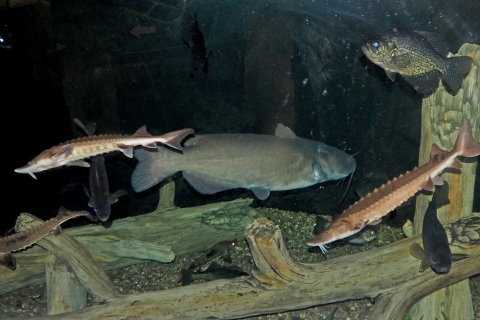Facility Activities
Tour the visitor center and learn more about the beauty and history of the Upper Mississippi River basin. See many examples of river fish in our 1,500 gallon aquarium. Tour the sturgeon and coldwater buildings and see thousands of sturgeon and trout being reared for restoration projects across the country. Tour our ponds and walk across the road to our accessible dock to feed our rainbow trout in Pond 2.


